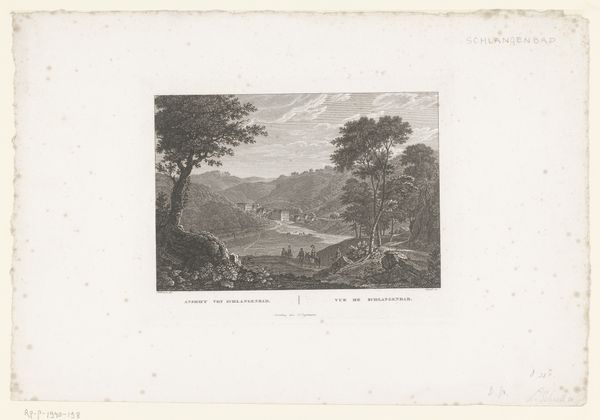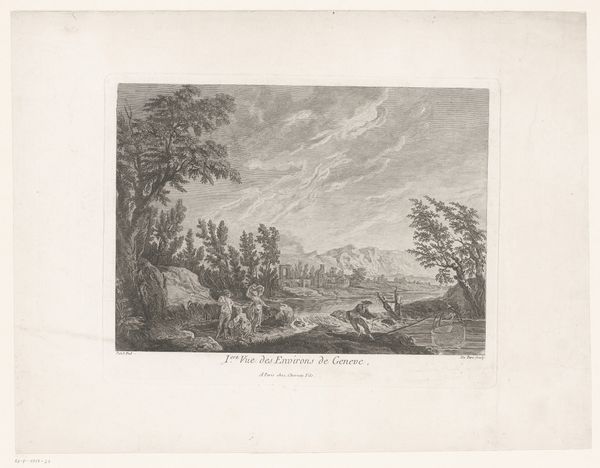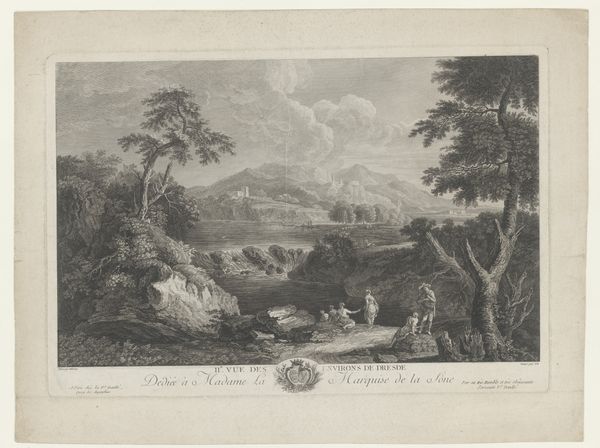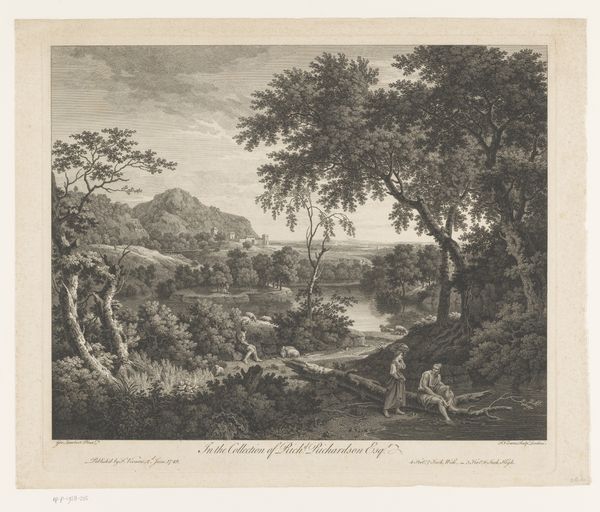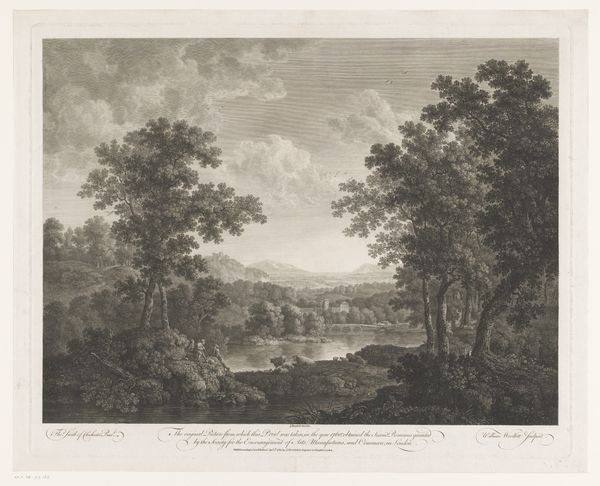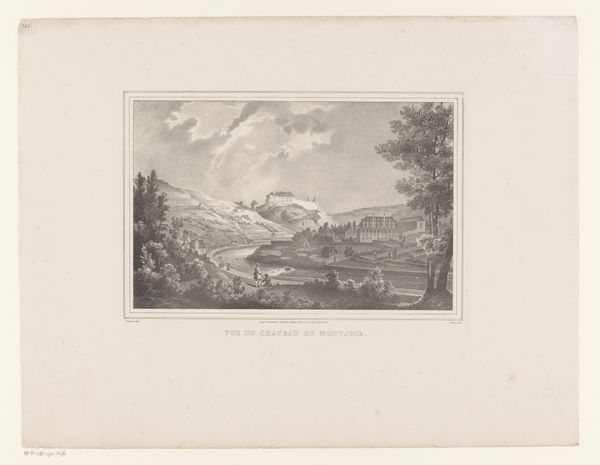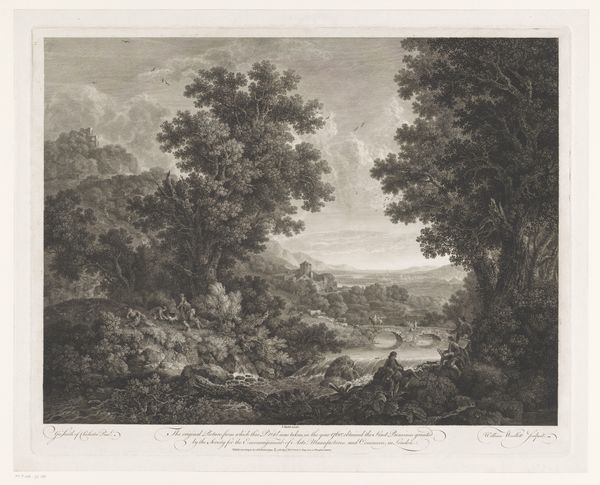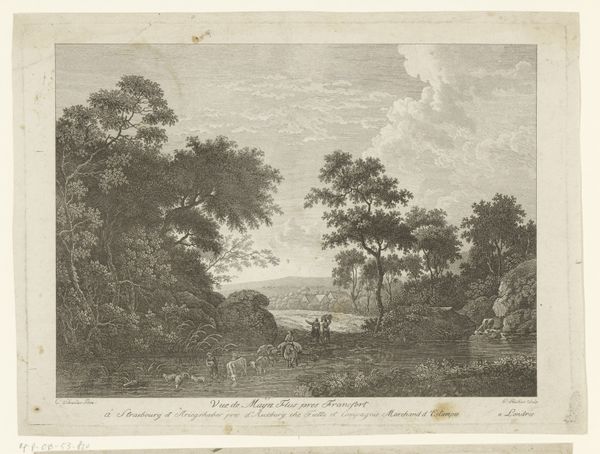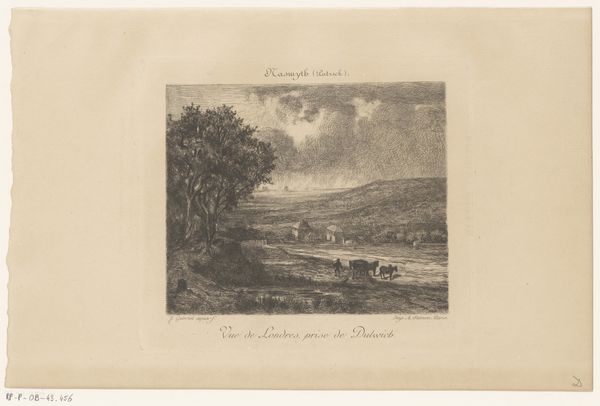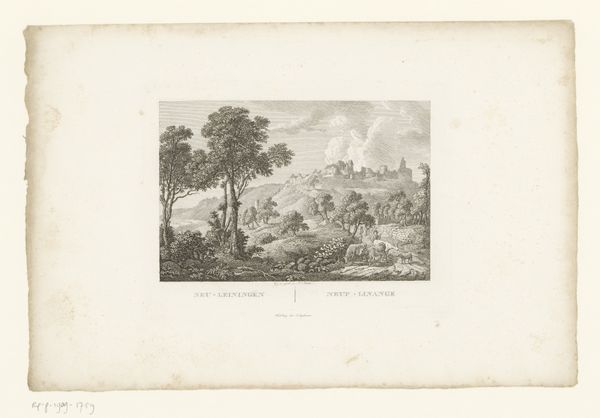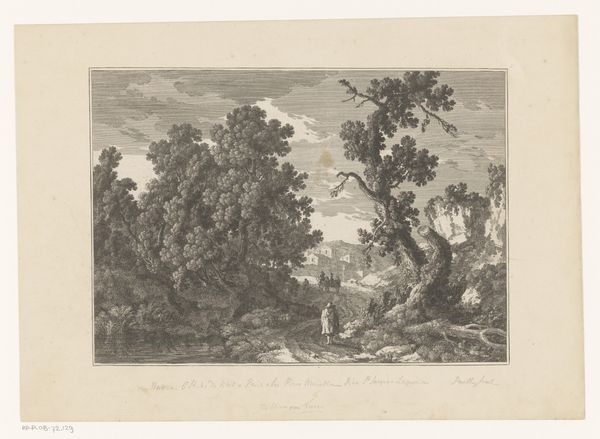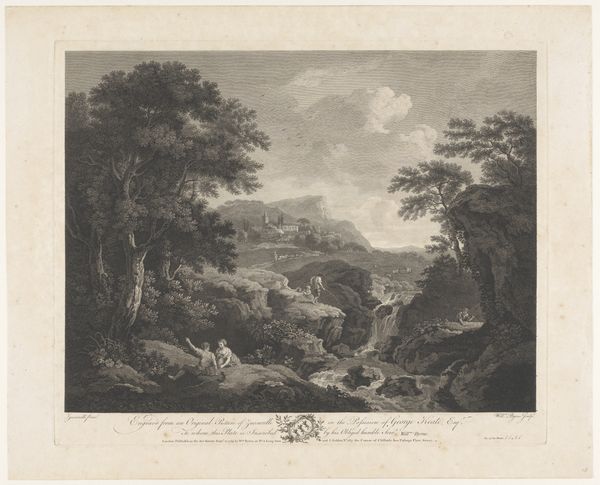
Landschap met Cicero aan de oever van een rivier bij zijn villa 1778
0:00
0:00
print, engraving
#
neoclacissism
# print
#
landscape
#
classical-realism
#
river
#
line
#
history-painting
#
engraving
Dimensions: height 445 mm, width 559 mm
Copyright: Rijks Museum: Open Domain
Editor: This print just exudes serenity. The monochromatic landscape creates a soft, almost dreamlike atmosphere. Curator: Indeed. We're looking at "Landscape with Cicero at the Bank of a River near his Villa," an engraving from 1778 by William Woollett, after a painting by Richard Wilson. Its composition reflects a deliberate order. Observe how the lines direct the eye. Editor: The textures are captivating. Look at the rendering of the water versus the foliage – it makes me wonder about the plates, the inks used, and the techniques employed to create this variation. Curator: Precisely. Note the layering; it generates depth. The foreground trees act as a frame, inviting us to visually enter Cicero's world. The river leads to his villa and then up to the mountains beyond, composing a cohesive visual structure. This illustrates the Neoclassical desire to present order and balance in nature. Editor: But nature isn't orderly. It's always struck me how the idealized classicism always seems to smooth over the harder realities of resource extraction, labor, and even patronage needed to bring artworks into existence. Curator: Undoubtedly, but the engraving, relying on line, aims to evoke a specific mood—a serene and contemplative mood tied to Classical ideals. The deliberate positioning of Cicero invites the viewer to reflect on intellectual life amidst nature. Editor: I agree it suggests tranquility, a space carved out from everyday life for intellectual pursuits. The landscape seems tamed, harnessed almost. The villa is not only a place of reflection but a product of immense labor and capital. I mean, imagine the craft involved, from felling those trees to quarrying stones. Curator: I think it’s important to note here how Woollett utilized line to build the whole structure, thus reinforcing the scene’s harmony. Editor: Overall, engaging with the materials and the artistic processes helps us see beyond just a pretty scene, allowing a better appreciation of the work involved in translating a place into art. Curator: Precisely. In examining its aesthetic, we appreciate how balance is conveyed. Editor: And I'd add, understanding how this scene was produced helps us appreciate its deeper connection to culture and consumption.
Comments
No comments
Be the first to comment and join the conversation on the ultimate creative platform.
